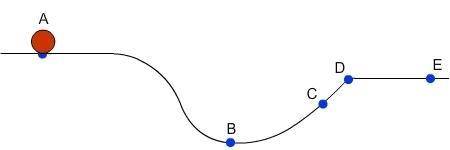

Answers: 3


Another question on Physics

Physics, 21.06.2019 19:10
Athin, square metal plate measures 14 cm on each side and has emissivity of 0.60. the plate is heated to a temperature of 745°c. what is the rate at which the plate radiates energy ? the stefan-boltzmann constant is 5.67 × 10-8 w/(m2 ? k4). remember that the plate will radiate energy from both its top and bottom surfaces.
Answers: 1

Physics, 22.06.2019 02:00
Chapter 23, problem 075 the figure shows a geiger counter, a device used to detect ionizing radiation (radiation that causes ionization of atoms). the counter consists of a thin, positively charged central wire surrounded by a concentric, circular, conducting cylindrical shell with an equal negative charge. thus, a strong radial electric field is set up inside the shell. the shell contains a low-pressure inert gas. a particle of radiation entering the device through the shell wall ionizes a few of the gas atoms. the resulting free electrons (e) are drawn to the positive wire. however, the electric field is so intense that, between collisions with gas atoms, the free electrons gain energy sufficient to ionize these atoms also. more free electrons are thereby created, and the process is repeated until the electrons reach the wire. the resulting "avalanche" of electrons is collected by the wire, generating a signal that is used to record the passage of the original particle of radiation. suppose the radius of the central wire is 24 âµm, the inner radius of the shell 2.3 cm, and the length of the shell 14 cm. if the electric field at the shell's inner wall is 2.8 ă— 104 n/c, what is the total positive charge on the central wire?
Answers: 1

Physics, 22.06.2019 06:30
5submission this assignment is worth 20 points total. you are required to submit the following by next lab: 1. (3 points) determine the equation for the output angular velocity ω2 = θ˙ 2 as a function of θ1, ω1 = θ˙ 1 and α. you must show all your work to receive credit. 2. (2 points) use the result of problem#1 to plot ω2 over 0 ≤ θ1 ≤ 360deg with ω1 = 360deg/sec. do this for α = {10,30}deg. show the results on the same plot and properly label the axes, title, legend. for this you can use matlab or ms excel. 3. (3 points) determine the equation for the output angular acceleration ω˙ 2 and create a plot similar to the one in problem#2. 4. (10 points) submit plots of the results (ω2 and ω˙ 2) obtained from creo/mechanism and compare them to results of problem#2 and problem#3. note that you should do these comparisons for the two cases with α = {10,30}deg. 5. (2 points) provide a brief explanation of the results. did they match? what are the implications as misalignment angle increases?
Answers: 3

Physics, 22.06.2019 11:50
Two resistors r1 and r2 may be connected either in series or parallel across an ideal battery with emf ε. we desire the rate of energy dissipation of the parallel combination to be 8.75 times that of the series combination. if r1 = 105 ω, what are the (a) smaller and (b) larger of the two values of r2 that result in that dissipation rate?
Answers: 2
You know the right answer?
what happens to the sum of the balls kinetic energy and potential energy as the ball's roll from poi...
Questions

Spanish, 30.10.2020 06:50





Mathematics, 30.10.2020 06:50


Mathematics, 30.10.2020 06:50

History, 30.10.2020 06:50



English, 30.10.2020 06:50



Health, 30.10.2020 06:50

Mathematics, 30.10.2020 06:50


Mathematics, 30.10.2020 06:50

Mathematics, 30.10.2020 06:50

Mathematics, 30.10.2020 06:50




